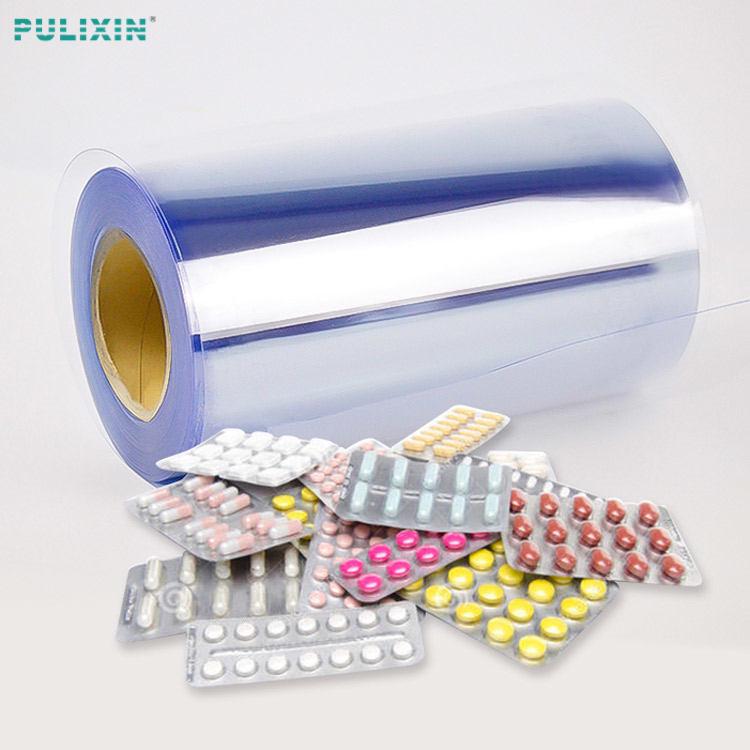Why choose PET plastic sheets for pharmaceutical packaging?
There are several main reasons for choosing PET plastic sheets for pharmaceutical packaging:
1. Safety: PET (polyethylene terephthalate) plastic sheet is a synthetic material that meets medical and food industry standards and is widely recognized as a safe packaging material. It will not chemically react with the drug and will not adversely affect the quality of the drug. In addition, PET plastic sheets have good physical properties, which can effectively protect pharmaceuticals from external influences, such as moisture, light and oxygen.
2. Transparency: PET plastic sheet has excellent transparency, which makes it easy to observe the internal conditions of pharmaceutical packaging. This is especially important for liquid medicines, capsules or tablets where clear visibility is required, as patients need to confirm the status and expiration date of the medicine.
3. Lightweight: PET plastic sheets are relatively light, which reduces shipping costs.
4. Durability: PET plastic sheets have good wear resistance and impact resistance, which play an important role in the integrity and protection of pharmaceutical packaging during transportation and carrying.
5. Easy processing: PET plastic sheet is easy to process and shape during packaging production. It can be made into packaging containers of various shapes through simple processes such as thermoforming, so as to adapt to different types of medicines.
6. Strong composite properties: When choosing pharmaceutical packaging materials, it is very important to consider comprehensive factors. Although PET plastic sheet has many advantages, it may not be the only choice that is completely suitable for some specific drugs and usage scenarios. Therefore, in many cases, drug packaging will use a combination of various materials to make full use of the advantages of various materials and make up for the deficiencies of various materials.
Some common practices are to combine PET plastic sheets with other plastic materials to form composite or laminated structures. The purpose of this is to give full play to the characteristics of various materials while meeting the needs of pharmaceutical packaging. For example:
- Barrier properties: Some drugs are sensitive to moisture, oxygen or light, and require better barrier properties. In this case, PET plastic sheet can be selected as the inner layer to provide excellent barrier properties, and at the same time, it is covered with a layer of material with better barrier properties, such as EVOH (ethylene/alcohol copolymer) or PVDC (polychlorinated vinyl).
- Temperature resistance: For medicines that need to be stored or used in a high temperature environment, a high temperature resistant plastic layer, such as PP (polypropylene) or PS (polystyrene), can be added to the PET plastic sheet to provide additional resistance to temperature performance.
- Humidity: Some medicines need to maintain a certain humidity to maintain their stability. In this case, PET plastic sheets can be used in combination with materials with better moisture retention such as polyethylene (PE) or polyvinyl chloride (PVC).
- Protection: If the drug has certain solubility to plastic materials, PET plastic sheet can be used as the inner layer, and polyvinyl alcohol (PVA) or polycaprolactone (PCL) can be added to the outer layer to be compatible with the drug. better material.

7. Recyclability: PET plastic is a recyclable material, in line with the concept of sustainable development. Under a reasonable recycling and reuse system, it helps to reduce the impact on the environment and reduce resource consumption.
Relative News
- What Are the Different Types of Polypropylene She…
- Why choose PS plastic sheet for perfume bottle pa…
- The 37th China International Plastics and Rubber …
- Review of the first day of the 2025 Chinaplas exh…
- Application and unique advantages of light blocki…
- PULIXIN sincerely invites you to visit 2025Chinap…
- Today’s shipment – 20 tons of anti-fr…
- Customer Case: Successful Application of Anti-fre…
- How does the impact resistance of HIPS plastic sh…
- How to choose the appropriate HIPS sheet thicknes…
